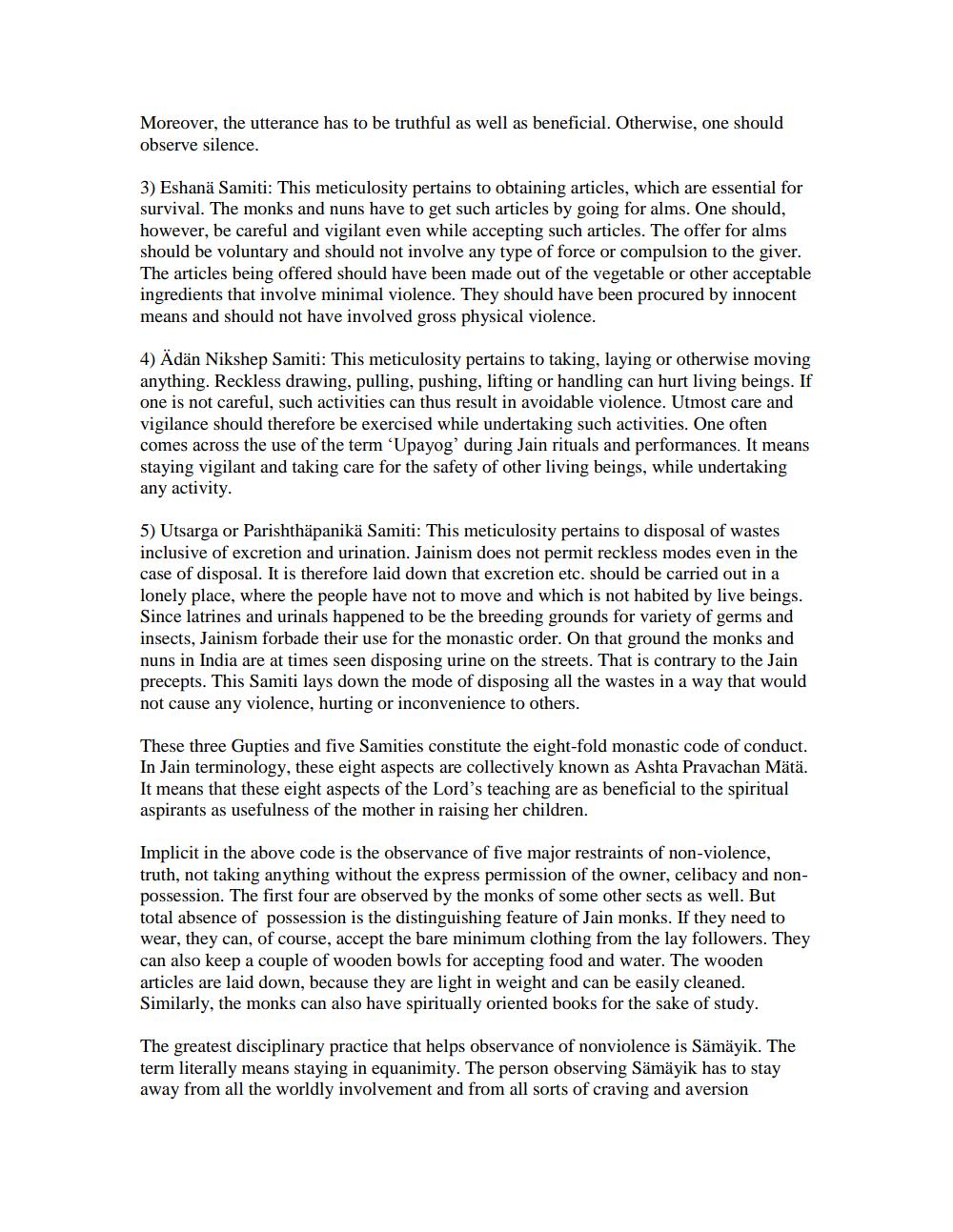________________
Moreover, the utterance has to be truthful as well as beneficial. Otherwise, one should observe silence.
3) Eshana Samiti: This meticulosity pertains to obtaining articles, which are essential for survival. The monks and nuns have to get such articles by going for alms. One should, however, be careful and vigilant even while accepting such articles. The offer for alms should be voluntary and should not involve any type of force or compulsion to the giver. The articles being offered should have been made out of the vegetable or other acceptable ingredients that involve minimal violence. They should have been procured by innocent means and should not have involved gross physical violence.
4) Ädän Nikshep Samiti: This meticulosity pertains to taking, laying or otherwise moving anything. Reckless drawing, pulling, pushing, lifting or handling can hurt living beings. If one is not careful, such activities can thus result in avoidable violence. Utmost care and vigilance should therefore be exercised while undertaking such activities. One often comes across the use of the term 'Upayog' during Jain rituals and performances. It means staying vigilant and taking care for the safety of other living beings, while undertaking any activity.
5) Utsarga or Parishthäpanikä Samiti: This meticulosity pertains to disposal of wastes inclusive of excretion and urination. Jainism does not permit reckless modes even in the case of disposal. It is therefore laid down that excretion etc. should be carried out in a lonely place, where the people have not to move and which is not habited by live beings. Since latrines and urinals happened to be the breeding grounds for variety of germs and insects, Jainism forbade their use for the monastic order. On that ground the monks and nuns in India are at times seen disposing urine on the streets. That is contrary to the Jain precepts. This Samiti lays down the mode of disposing all the wastes in a way that would not cause any violence, hurting or inconvenience to others.
These three Gupties and five Samities constitute the eight-fold monastic code of conduct. In Jain terminology, these eight aspects are collectively known as Ashta Pravachan Mätä. It means that these eight aspects of the Lord's teaching are as beneficial to the spiritual aspirants as usefulness of the mother in raising her children.
Implicit in the above code is the observance of five major restraints of non-violence, truth, not taking anything without the express permission of the owner, celibacy and nonpossession. The first four are observed by the monks of some other sects as well. But total absence of possession is the distinguishing feature of Jain monks. If they need to wear, they can, of course, accept the bare minimum clothing from the lay followers. They can also keep a couple of wooden bowls for accepting food and water. The wooden articles are laid down, because they are light in weight and can be easily cleaned. Similarly, the monks can also have spiritually oriented books for the sake of study.
The greatest disciplinary practice that helps observance of nonviolence is Sämävik. The term literally means staying in equanimity. The person observing Sämäyik has to stay away from all the worldly involvement and from all sorts of craving and aversion




